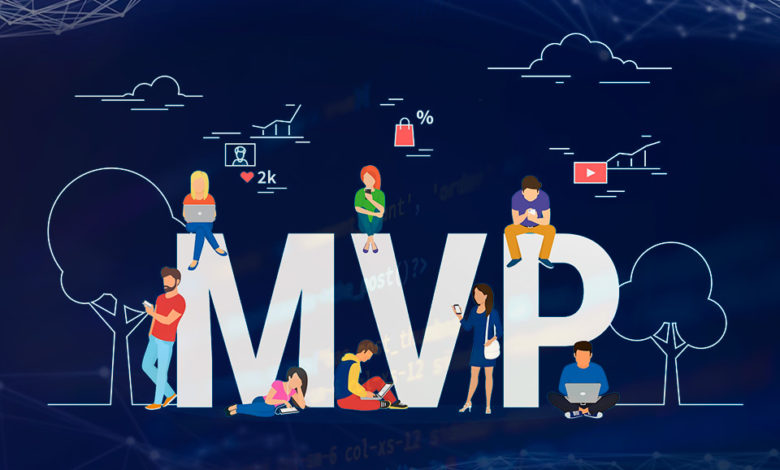MVP Development Made Simple

You’ve probably heard of MVP development, but you’re not exactly sure how to get started. You know parts of the development cycle should be cut out, but you don’t know which ones, and what the order should be. Furthermore, you want the best results possible from your MVP development.
Everyone wants to launch an MVP these days, but we see so many companies who rush in and don’t quite understand what they’re getting into. They end up creating a product no one cares about. This leads to wasted time and money.
What is a minimum viable product?
Minimum Viable Product (the MVP) development method was designed by Steve Jobs in 1996 as an approach to developing software for the Apple II platform. It is now used by many software developers to quickly start developing applications for mobile devices or other platforms without having to write all the code by hand. The MVP method involves writing an application or piece of software containing just enough functionality to demonstrate what could be done with the user’s input. The aim is to show the users of your project what kind of application it is possible to build with their input without having to buy the full version
Why is the MVP development method so popular nowadays?
The main factor is the minimum amount of functionality that can be achieved with an existing technology or existing community. It’s the starting point for market feasibility studies. A minimum viable product looks easy to complete, does everyone a favor, and has some elegant design. A minimum viable product has a high probability of success because it’s an unambiguous step toward a more complete or valuable product.
In software development, a minimum viable product is the smallest possible number of functions that can be included in an application before the application fails with an error when run.
Minimal viable products may be the most important thing to a start-up because they get the most funding. It’s worth thinking about what your MVP could be. It could be a small thing — a button that takes users to their main menu. A lot of users don’t use the menu button anymore. Maybe it is a newsletter that gathers information and informs people before they do something. Or it is just a blog that people visit regularly but don’t read the site content (though it could be quite informative). Once you have an idea or two about what your MVP could be, you can work out how much it would cost to build it, how long it would take to build it, and whether there are any other ways you could build this for less money that would get the job done as well.
How to approach MVP development and product design?
If you are a startup founder, an entrepreneur or just curious about the craft of product creation, managing a product can be tricky. Your users put their faith in you to deliver something great. They are counting on you to make it happen. This is hard work, but also exhilarating. At the same time, it can be nerve-wracking. How do you handle the unexpected? What do you do if your users aren’t happy with what you’ve built? MVP development is a term most of the time used in the software development world to describe a prototype that meets some criteria and is largely functional, but not as feature complete as a full product would be. In software development, MVP’s mostly have some functionality built in, and they are ready for discussion and iteration.
Factor to consider when approaching MVP DEV:
- User testing
- Iterative development
- Design review
- Security and stability tweaks and more.
It’s where you’ll be focused most of your time building future features for the platform. And it’s also where you’ll make your biggest decisions — about what features get added to the main product and what new features you should build in to the product
The resources and costs perspective of MVP
The resources and costs perspective of MVP is primarily concerned with tracking server and database maintenance costs, transaction costs incurred in creating a product for the first time, as well as IT support costs for early adopters only. These costs are all estimated and managed by the MVP team as they go through each feature and implementation. This means that they can be tracked even if the product is developed without a significant amount of funding from an investor or traditional company – which can happen if the idea is really exciting and everyone wants in at the moment.
Thus, a low-cost approach may be appropriate when initial requirements are simple, fast evolving and monitored easily by human attention. However, this approach will fail if firm requirements are emerging over time due to growth or change in requests.
What comes after an MVP?
After a successful MVP, there are usually several opportunities for improvement. The first is a bug fix release and then a rapid effort to get the product ready for wider adoption. User stories are usually proposed for features that haven’t been implemented yet to make the MVP even better.
This is followed by an iterative release cycle as the product matures and new challenges emerge. The MVP has been adopted by a few users but there are still some features that don’t work as expected and some and developers who aren’t as experienced as the lead developer.
Why do you need to Choose right developers team for your MVP?
Choosing a leading MVP and development company is a good choice if you need to get your website or app faster. For example, there is a team https://webspaceteam.com/mvp-development/ which
has years of experience in software development and Design Thinking, and brings with them an unparalleled knowledge of the software development lifecycle. They strive to provide our clients with cutting edge solutions that just work.


